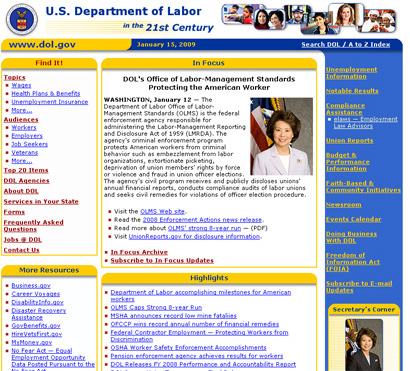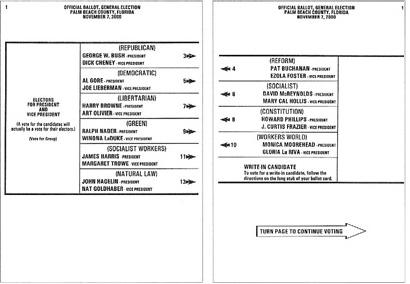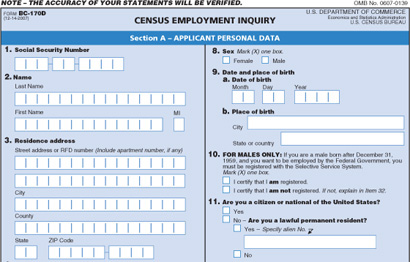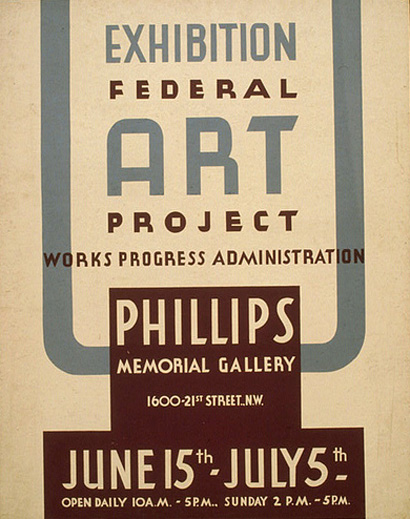To President-Elect Obama:
No doubt you’re getting a lot of these letters lately. I’m no Michael Pollan or Tim O’Reilly, but I hope you’ll take the time to read my hopes for the future of the relationship between design and the United States government.
We are coming upon a time of exciting change in America. Watching your transition has given great hope to many, from scientists, to net neutrality advocates, to those just wanting some sanity in this country. Your presidential campaign demonstrated that you understood the power of good design. It inspired confidence not only in artists and designers, but everyday citizens. Thousands found their unique voices in your message, remixing your image and campaign identity to express their hopes for change.
Listed below are design problems I want to see your administration address, which will help to raise understanding and confidence in this country and around the world.


1. Overhauling Government Web Sites and Online Communication
The Obama presidential campaign web site was a masterpiece of politics exploiting fine aesthetics and Web 2.0 applications. With technology such as phone texting, people could literally carry you around in their pockets. Maintaining that level of connection through online communication will be vital during your administration.
Overall, the network of public government web sites is crippled by incomprehensible navigation and bugs, an eye sore with design aesthetics more second-rate IT firm than presidential. A comprehensive, systematic design would ensure visual and conceptual unity, improving organization and access, and dissolve the barrier between government bureau and online user.
Open information in the form of blogs, RSS feeds and online video should be widely applied. Imagine being able to download news feeds from government offices onto your iPhone: food safety alerts from the USDA, hiking conditions from the National Park Service, or employment opportunities from a variety of other agencies. Such information can be passed from person to person, strengthening the bond between citizen and citizen, and government and citizen. Publicly accessible, easy-to-search databases of photos and documents — such as the Library of Congress using Flickr to crowdsource the organization of part of its photo collection — helps people feel connected to national history.
As an “administration of the internet,” embracing new technology and intuitive online design, instead of shunning and censoring it, will demonstrate your presidency’s commitment to transparency and the free exchange of ideas, acknowledging the Internet as an indispensable force driving the future of this nation.


2. Improving Election Ballot Design
As the 2000 presidential election demonstrated, simple design mistakes on ballots can throw the country into chaos. Cloudy navigation, poor information hierarchy, and confusing ballot instructions can unwittingly determine the outcome of an election. Differences in languages, reading comprehension and abilities only increase the risk for mistakes.
The American Institute of Graphic Arts’ “Design for Democracy” initiative has been addressing ballot design since 2000, working with local jurisdictions to implement improvements, but this effort needs to expand to a national level. Even in the recent presidential election, poorly designed ballots still confused voters.
Nowhere else is the relationship between design and government this critical. Rather than an afterthought, design needs to be considered a vital part of the voting process, ensuring that everyone who votes can do so with confidence.


3. Redesigning Federal Job Applications
Baby boomers are retiring en masse and will leave behind over 500,000 federal positions. As someone who has slogged her way through it, I know that filling out the application is the most arduous part of applying for a federal job. I’ve talked to friends and family who have been scared off from applying to jobs with the government because of the frustrating forms. With the government expecting to hire hundreds of thousands of people in the coming years, using design to make the application process understandable and accessible to all will be critical.
The application forms — both print and online — in their current form are a confusing mess of incomprehensible jargon and poor structure, easily leading to mistakes, stress and wasted time. Much like with election ballot design discussed above, good design can lessen or eliminate many of these problems, benefitting not only the government but generations of job seekers in this country.


4. Making Design an Integral Player in Economic Recovery
In your December 6, 2008 online video address, you announced plans for a massive economic recovery initiative, like that of the Works Projects Administration during the Great Depression. Along with being an excellent opportunity to carry out the improvements discussed in this letter, the government should work hand-in-hand with designers to promote and implement changes that will affect the future of the United States. After all, designers need jobs, too.
The original WPA knew the of value art and design in civic life. Its sponsorship of the arts lead to the creation of over 200,000 sculptures, murals, posters and other works that have enriched this nation’s history and spirit. The role of designers in your job creation plan should not be underestimated. We are not expendable luxuries, but essential factors to the success of your goals. We are the face and backbone of your American Recovery and Reinvestment Plan, creating posters, television commercials and web sites to advertise programs; designing energy-efficient buildings; and developing information campaigns about education, technology and citizen activism.
Design can express the hope your recovery plan inspires, opening people to its opportunities, its vision for a greater, greener, grander America.…
I graduated from art school into the toughest job market in recent American history. Finding and keeping a job has been perilous and frustrating. With the plunging economy shrinking demand for branding and marketing, I and other young designers need another direction for our talents.
Like many people growing up through the Bush II administration, I became interested in politics, particularly the intersection of artistic expression and government policy. But design’s foray into politics at that time seemed to encompass only graphics of George W. Bush straddling a nuclear missile Slim Pickens-style. I became quickly bored with what passed as protest design. There had to be another way to use design to influence politics and opinion, to change the way things are run. There had to be something that would last longer than a vinyl sticker stuck onto a stop sign.

The points discussed above are a start, but many designers want to do something that really matters. During the presidential campaign, we created posters, web sites, t-shirts, a myriad of ways to pass on your message of hope and change. And we were pleased to find on election night our efforts were not in vain. But now we want to do more. We want to help.
If you’ll have us.
Nicole Peterson, a graduate from the Massachusetts College of Art and Design, is a graphic designer in Boston, MA. She runs the blog Design Benign, and has previously contributed writing to Speak Up.






Great post! I'd also love to have Obama's administration commission a redesign of the Passport. The cheesy cartoony imagery on the current passports is a disgrace to our great country.
On Jan.16.2009 at 09:48 AM